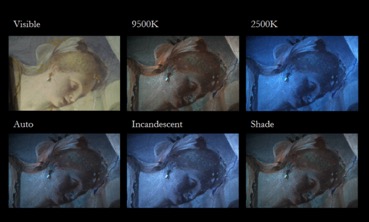The Center's Science for Art Fall 2018 Speaker Series welcomes Dr. Giovanni Verri on September 21st for his talk "On the use of photo-induced luminescence for the analysis and characterisation of cultural heritage”
The Center's Science for Art Fall 2018 Speaker Series welcomes Dr. Giovanni Verri on September 21st for his talk "On the use of photo-induced luminescence for the analysis and characterisation of cultural heritage.”
Join us for a lecture and discussion on the use of photo-induced luminescence techniques for the characterisation of cultural heritage. In particular, and by means of a number of case studies, it will highlight the effects of absorption of luminescence emission by coloured compounds and how these effects can be taken into consideration when interpreting luminescence data.
Dr. Verri is a reader and coordinates an MA in Conservation of Buddhist Art at the Courtauld Institute of Art. He received his Ph.D. in Physics from the University of Ferrara (IT) focusing on technical imaging of works of art.

Talk Details:
Friday, September 21st, 12-1pm
Technological Institute – TechM152
2145 Sheridan Road
Evanston, IL, 60208
Full Abstract:
On the use of photo-induced luminescence for the analysis and characterisation of cultural heritage
Dr. Giovanni Verri, Courtauld Institute of Art
When excited with electromagnetic radiation, materials may emit radiation at lower energy. In particular, ultraviolet-induced luminescence spectroscopy and imaging are commonly used techniques for the characterisation of painting materials, such as organic binders and colorants, and inorganic pigments. However, their interpretation is strongly connected to both the experimental setup used and the physical and chemical interactions among materials of which a paint layer is composed. This presentation will discuss the use of photo-induced luminescence techniques for the characterisation of cultural heritage, their advantages and limitations. In particular, and by means of a number of case studies, it will highlight the effects of absorption of luminescence emission by coloured compounds and how these effects can be taken into consideration when interpreting luminescence data.
About Dr. Verri:
Giovanni Verri graduated in Physics in 1997, with a dissertation on technical imaging of works of art, at the University of Ferrara, Italy. He then completed a PhD in 2001 at the same institution. After a post-doctoral experience at the Weizmann Institute in Israel, he collaborated on a project organised by the Getty Conservation Institute, Los Angeles, for the non-invasive characterisation of organic materials in wall paintings. Isn 2007, he completed an MA in conservation of wall paintings at the Courtauld Institute of Art, London, where he worked on the conservation of Buddhist wall paintings in China. In the same year, he was appointed a Mellon Fellow at the British Museum, where he developed an imaging technique called visible-induced luminescence imaging for the characterisation of Egyptian blue, Han blue and Han purple, three inorganic pigments used in Europe and Asia. He applied this technique to a number of works of art, including the Tomb of Tutankhamen, the Nebamun wall paintings, the Parthenon sculptures, the Mausoleum at Halykarnassos, the Nike of Samothrace and the Royal Tombs in Vergina, Macedonia; this technique has now become commonly applied for the analysis of colour by numerous institutions around the world and has provided breakthroughs in the understanding of the original appearance of ancient artefacts. In 2013, he returned to the Courtauld Institute of Art; he is now a Reader and coordinates an MA in Conservation of Buddhist Art.
